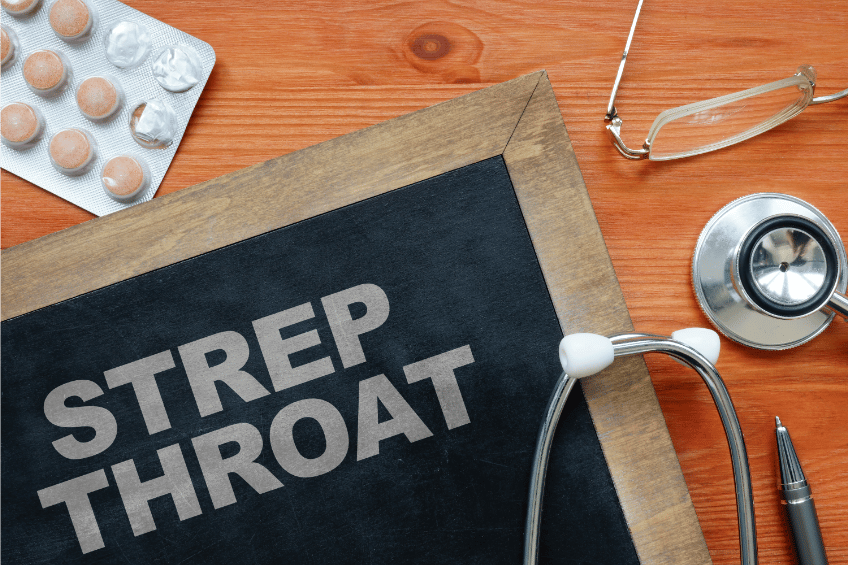What is Strep Throat?
The most common cause of a sore throat is a virus. However, some types of bacteria can be responsible as well. One of them is group A streptococcal bacteria, which causes streptococcal pharyngitis, or strep throat, and affects the back of the throat and tonsils. The disease is contagious and spreads from the infected person to other people through respiratory droplets released while talking, coughing or sneezing. [1, 2]
It is possible to get sick if you:
- Inhale respiratory droplets containing the strep bacteria;
- Touch something with those droplets and then touch your mouth or nose;
- Drink from the same glass of eat from the same plate as the infected person;
- Touch sores on the skin caused by strep.
It is important to know that infected people might show no symptoms and seem perfectly healthy; however, those who do have symptoms are much more contagious. [3]
Who is at risk?
Anyone can get strep throat, but some factors increase the risk of infection. It is more common in children than adults, especially for ages 5 to 15. Statistics say that 3 in 10 children with a sore throat have strep throat, whereas in adults the corresponding figures are 1 in 10. It is rare in children younger than 3. Some adults may be at increased risk, too, especially those in close contact with children.
Infectious illnesses normally spread quickly among large groups of people. Crowded places such as schools, daycare centers, and military training facilities increase the risk of getting group A strep. [3]
